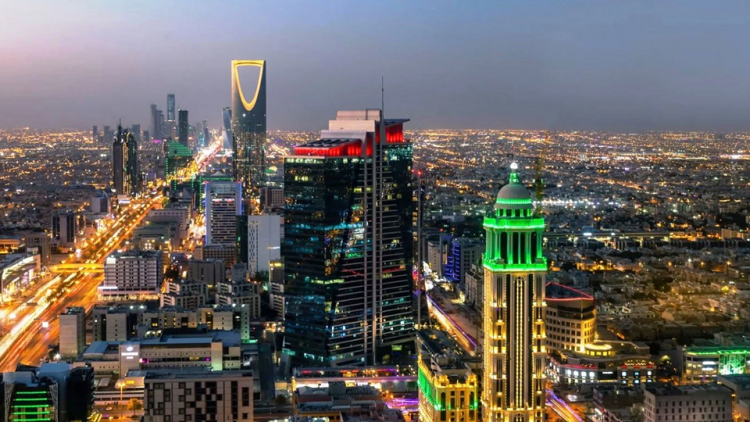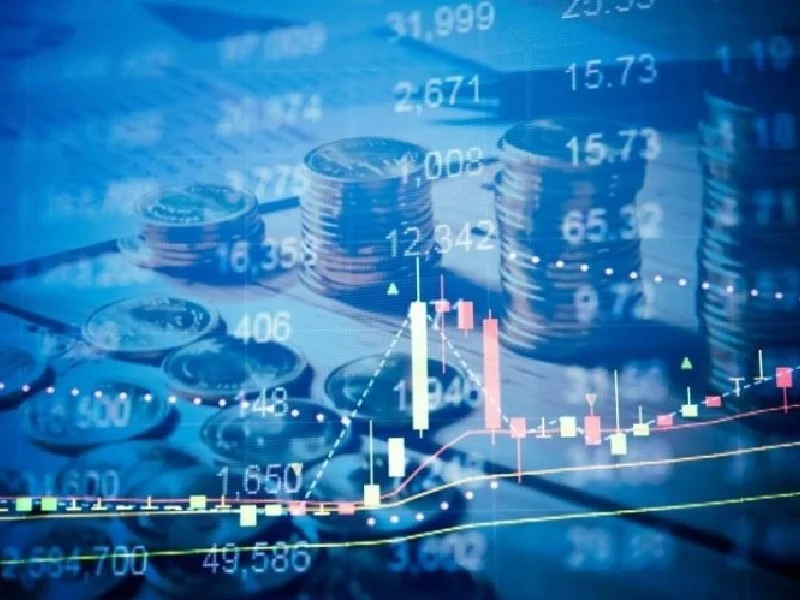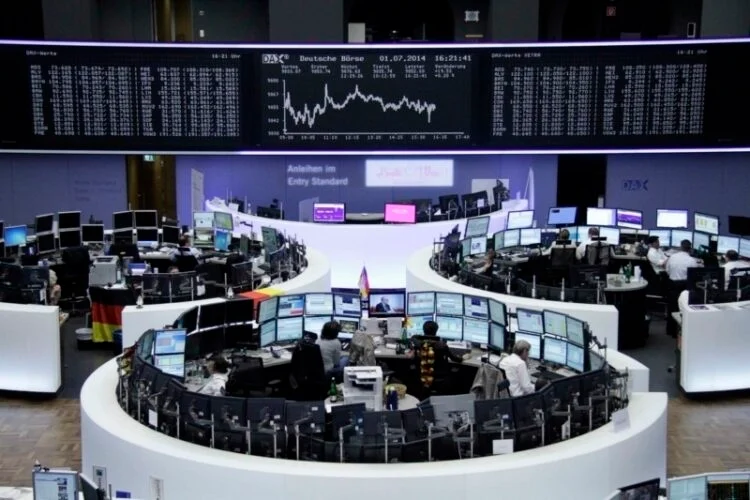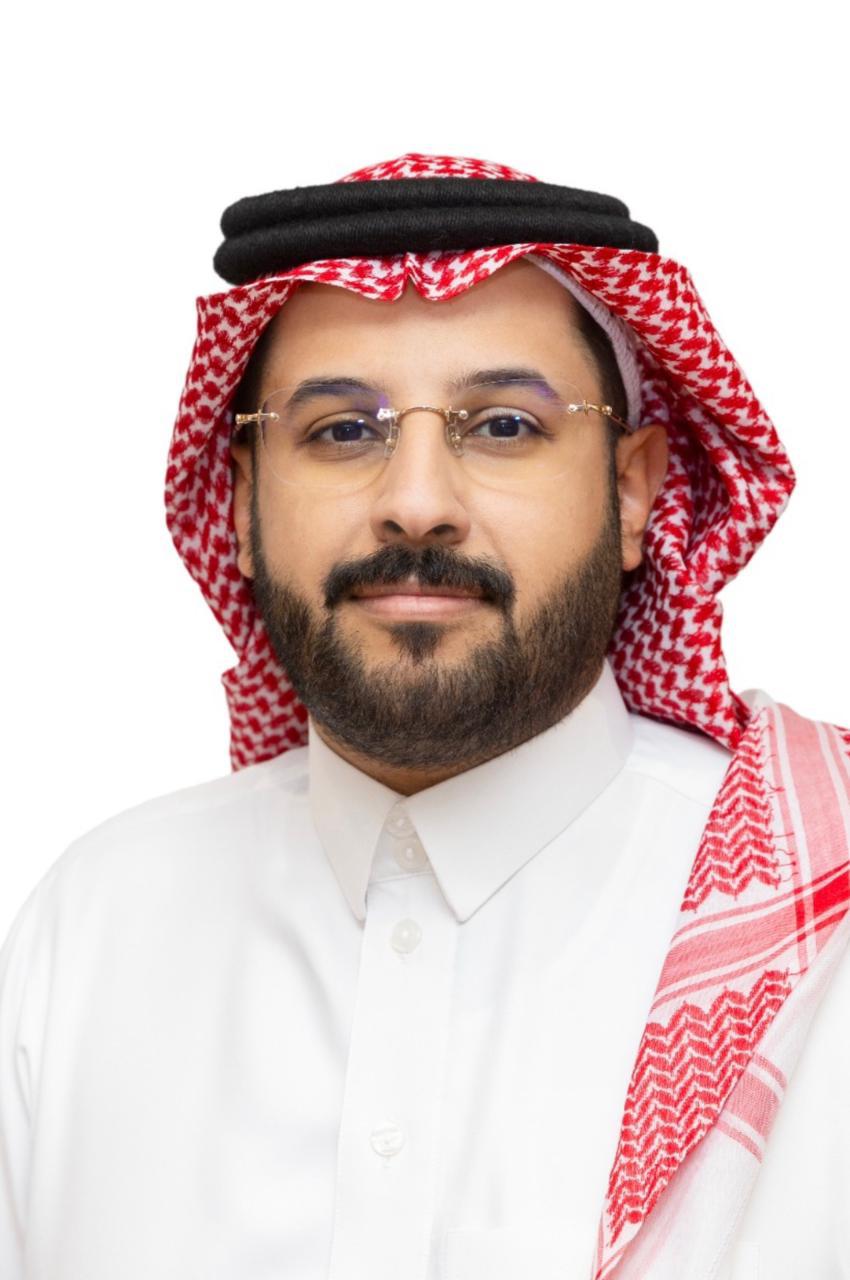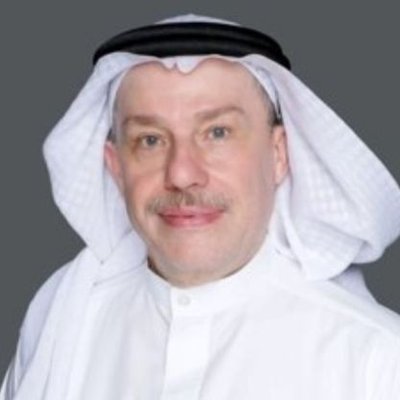Publisher: Maaal International Media Company
License: 465734
Saudi Arabia Outlook Revised To Positive On Sustained Reform Momentum; ‘A/A-1’ Ratings Affirmed
اقرأ المزيد
Overview
— At the same time, the recalibration of some large infrastructure projects should contain pressure on Saudi Arabia’s public finances, in our view.
— Even as the government and the Public Investment Fund accumulate higher debt, we expect the government will remain in a strong net asset position of above 40% of GDP through 2027.
— We therefore revised our outlook to positive from stable on Saudi Arabia and affirmed our ‘A/A-1’ unsolicited sovereign credit ratings.
— to strengthen institutions that, for example, support the effective implementation of the ongoing economic transformation and development of domestic capital markets, could be positive for the ratings.
Rating Action
On Sept. 13, 2024, S&P Global Ratings revised its outlook on Saudi Arabia to positive from stable and affirmed its ‘A/A-1’ long- and short-term foreign and local currency unsolicited sovereign credit ratings. The transfer and convertibility (T&C) assessment is ‘A+’.
Outlook
The positive outlook reflects the potential that the Saudi government’s wide-ranging reforms and investments will underpin the development of the non-oil economy while upholding sustainable public finances.
Upside scenario
We could raise the ratings over the next two years if reforms lead to steady growth in GDP per capita supported by continued momentum in non-oil growth. Furthermore, measures to strengthen institutions that, for example, support the effective implementation of the Continued execution on Vision 2030 initiatives will support strong non-oil growth prospects in Saudi Arabia over the medium term.
Downside scenario
We could revise the outlook to stable if we observed pronounced fiscal weakening, or if real per capita GDP growth were to fall relative to our current forecasts. A material rise in domestic or regional instability could also weigh on the ratings.
Rationale
The outlook revision reflects our view of Saudi Arabia’s strong non-oil growth outlook and economic resilience against ongoing volatility stemming from the hydrocarbon sector. Saudi Arabia’s economy is continuing on a significant and rapid economic and social transformation under the country’s Vision 2030. We expect to see an acceleration of investments to develop newer industries, such as tourism, and diversify the economy away from its primary reliance on the upstream hydrocarbon sector. Current investments will spur consumption by the kingdom’s over 35 million (largely young) population and increase the productive capacity of sectors such as manufacturing, logistics, and mining.
The sheer scale and size of projects–estimated at above $1 trillion in total–suggest large funding requirements across the government and government-related enterprises (GREs), particularly the Public Investment Fund (PIF). The government is undergoing a recalibration exercise to prioritize projects based on economic returns and reassess timelines to avoid economic overheating and funding pressures. We therefore project a more gradual execution of investments and that the government’s net asset position will gradually fall, but remain comfortably strong, through to 2027.
Over the longer term, Saudi Arabia will likely emerge as a more diversified economy, with more jobs created for the young population, and broader workforce participation. However, execution risks could arise from a sharper fall in oil prices and volumes and the ensuing impact on public finances, tight supply, skills shortages, and developing basic infrastructure like housing.
Large hydrocarbon reserves and low production costs, alongside large cash buffers at national oil company Saudi Aramco, provide Saudi Arabia some resilience to a global energy transition to low-carbon alternatives, especially in a future scenario where fossil fuel demand will largely be met by a smaller number of the most efficient producers. Notwithstanding the increasing influence of non-OPEC producers such as the U.S., Saudi Arabia continues to maintain its position as the world’s largest swing oil exporter (with spare installed production capacity permitting it to cut or raise production levels relatively quickly). The kingdom also retains a leadership role in OPEC+ and its resulting ability to influence global oil price trends.
Institutional and economic profile: Increased oil volumes from 2025 and non-oil growth will support medium-term growth prospects
—Lower oil production because of OPEC+ production cuts, despite non-oil growth momentum, will drive overall economic expansion of just 1.4% in 2024, relative to last year’s 0.8% contraction.
— We expect to see a pick-up in construction for Vision 2030 projects and the services sector, supported by consumer demand and an expanding workforce.
— We project stronger growth averaging 4.3% over 2025-2027.
Given weak global oil demand, especially from China, and increasing crude oil supply from non-OPEC+ countries like the U.S. and Canada, Saudi Arabia and OPEC+ decided to extend the existing production cuts until the end of November 2024, then gradually begin to ease them through to November 2025, with Saudi Arabia promising additional voluntary cuts over and above the OPEC+ quota. We estimate Saudi oil production will average 9.0 million barrels per day (bbl/day) in 2024, down from 9.6 million bbl/day in 2023. Oil production should then increase in line with higher global demand from next year. S&P Global Ratings currently forecasts Brent oil at $85/bbl for the rest of 2024 and $80/bbl over 2025-2027, from $82/bbl in 2023 (see ” ,” published Sept. 10, 2024, on RatingsDirect).
Economic diversification away from upstream crude production continues, with the nonoil sector (including government activities) now accounting for about 70% of GDP. The government is pursuing its ambitious Vision 2030 program by investing in infrastructure projects, “Saudization” of the workforce (replacing expatriates with Saudis where feasible), improving the business environment, increasing female participation in the workforce, and broader socioeconomic liberalization.
While a considerable part of this development will be funded by debt, we also expect foreign direct investment and portfolio inflows to gradually increase from a low base. The newly passed investment law, effective from February 2025, seeks to achieve parity between domestic and foreign investors and simplify rules and regulations to make foreign investment more attractive. Moreover, the government is encouraging the kingdom’s large firms to increase investments in the local economy to Saudi riyal (SAR) 5 trillion (about $1.3 trillion) by 2030 via the “Shareek” (partner) program.
Tourism, both religious and non-religious, currently comprising about 4% of GDP, is one of the sectors with significant potential. In 2023, Saudi Arabia’s tourist numbers topped that of the G-20 countries. Tourism receipts comprised 9% of current account receipts, up from 5% the year before. These trends are supported by smoother visa processes, an increase in religious tourism, the ability to stay longer in the kingdom, more avenues of leisure tourism including at places like Al-Ula and the Red Sea Resorts, and new festivals and sports events in Riyadh and other cities.
Another concrete outcome of the Vision 2030 plan is the rising participation of women in the workforce. Saudi female participation is now stabilizing at about 36% of the labor force since 2022, up from 17% in 1999, but below the Organisation for Economic Cooperation and Development average of 55% (see ” ,” Lower oil production because of OPEC+ production cuts, despite non-oil growth momentum, will drive overall economic expansion of just 1.4% in 2024, relative to last year’s 0.8% contraction. — We expect to see a pick-up in construction for Vision 2030 projects and the services sector, supported by consumer demand and an expanding workforce. — — We project stronger growth averaging 4.3% over 2025-2027. S&P Global Ratings Revises Its Natural Gas Price Assumptions; Oil Price Assumptions Unchanged Greater Share Of Working Women Bolster Saudi Arabia’s Economic Growth, Improving Productivity Will Entrench It published Sept. 20, 2023). As well as further expanding the workforce, improved labor productivity will be key to growth for Saudi Arabia over the next decade, in our view.
As the country undertakes the economic transformation, the PIF is largely responsible for investing in domestic giga-projects, key domestic industries and companies, sports and entertainment ventures, and international investments. The PIF held $925 billion in consolidated assets under management as of end-December 2023, which it aims to increase to about $1 trillion by 2025. The PIF continues to target $40 billion in investments in the local economy per year toward giga/mega projects including Neom (a futuristic city planned to be largely powered with renewable energy), the Quiddiya entertainment park, and the Red Sea Project.
The hydrocarbon sector and Aramco will continue to play a crucial role in economic diversification by supporting oil-linked sectors such as downstream refining and petrochemicals, and funding non-oil projects. Aramco has been providing the government with exceptional performance-linked dividends since September 2023, and the government has been deploying them toward infrastructure projects. A secondary listing of Aramco in June helped to raise another $12.4 billion for a 0.7% stake, after earlier large transfers to PIF and its subsidiaries. In early 2024, Aramco announced that it would suspend plans to increase its maximum sustainable capacity target (MSC; Saudi Arabia has historically maintained excess capacity as the world’s swing producer to support quick increases in production if required) of oil production to 13 million bbl/day by 2027, thereby helping to lower its capital expenditure (capex) requirements and potentially increase dividends. That said, they will continue to increase capacity and invest in the four oil fields in Dammam, Berri, Marjan, and Zuluf, along with developing shale capacity via the Jafurah unconventional (shale) gas field, with the latter largely feeding onshore industries and petrochemical complexes.
We expect Saudi Arabia’s centralized monarchic institutional framework, supported by the Consultative Council (Majlis-al-Shura) will remain. In late September 2022, the role of prime minister was transferred from the king to 39-year-old Crown Prince HRH Mohammed bin Salman Al Saud (MBS), formally recognizing him as head of government and further consolidating his position as heir to the throne. MBS is also chairman of the Council for Economic and Development Affairs (CEDA), as well as chairman of the PIF. Together, CEDA and PIF drive Vision 2030. Saudi Arabia will also continue on its recent path of social liberalization, which largely aligns with the demands of the country’s large young population.
Saudia Arabia aims to expand its geopolitical footprint beyond the region through its membership of multilateral bodies like the G-20 and its relations with the U.S., China, and India. China is the largest buyer of Saudi Arabia’s hydrocarbons, as the U.S. has become a net exporter of oil and gas in recent years. Despite discussions on potentially conducting some oil trades in Chinese yuan, we expect the majority of Saudi oil trades will continue in U.S. dollars.
Flexibility and performance profile: The government is targeting a calibrated expansionary fiscal stance
— We forecast fiscal deficits averaging 2.4% of GDP over 2024-2027.
— With rising imports for development projects, Saudi Arabia will run smaller current account surpluses of about 1.2% of GDP through 2027.
— Inflation in Saudi Arabia remains lower than in peer countries and is forecast to stay under control owing to subsidies on fuel and food, as well as a peg to the U.S. dollar.
Public investment will be the key driver of government spending growth and fiscal deficits. We expect the central government to run deficits of 2%-3% of GDP through 2027. During the first half of 2024, performance-linked Aramco dividends and non-oil economic activity helped achieve 9% growth in revenue. Spending grew by 12% during the same period, with capex deployed toward basic infrastructure for projects including Qiddiya, the Red Sea, Saudi Seasons and Green Riyadh. Authorities plan to gradually phase out energy subsidies, which made up an estimated 5% of GDP in 2023.
There are both possible upsides and downsides to our fiscal projections. The upside to revenue is largely tied to higher performance-linked dividends from Aramco that are determined as a percentage of Aramco’s free cash flow. For 2024, total performancelinked dividends are set at about $43 billion (nearly 4% of GDP). These exceptional dividends could continue beyond this year given the suspended capex on their maximum sustainable capacity targets. At the same time, downside risks to fiscal projections could occur as spending could rise beyond the budget, particularly on social spending and capex. Along with Vision 2030 projects, the government may also need to ramp up
spending for the planned hosting of Expo 2030 and potentially FIFA World Cup 2034 announced in 2023. However, we understand that the majority of the giga and megaprojects are primarily under the spending umbrella of the PIF, the National Development Fund, and other government-related entities, while the government is only in charge of the supporting infrastructure around the projects.
Given the fiscal deficits and slower growth of liquid assets, we project that Saudi Arabia’s — We forecast fiscal deficits averaging 2.4% of GDP over 2024-2027. With rising imports for development projects, Saudi Arabia will run smaller current account surpluses of about 1.2% of GDP through 2027. — Inflation in Saudi Arabia remains lower than in peer countries and is forecast to stay under control owing to subsidies on fuel and food, as well as a peg to the U.S. dollar. — net government asset position will reduce to 44% of GDP in 2027, from around 60% estimated in 2023. We forecast gross general government debt rising gradually to about 28% of GDP in 2027, from 22% in 2023. The government is mainly targeting external debt issuances through Eurobonds, sukuk, and alternative funding transactions such as project finance. As of second-quarter 2024, the government had raised more than 90% of the total issuance volume of 2023, including $12 billion Eurobonds in January 2024. The activity included a liability management exercise of about $17 billion to help reduce the large maturities coming due from 2025.
General government fiscal assets include the central government’s and key government institutions’ deposits at the Saudi central bank (SAMA), as well as our estimates of the government pension funds’ liquid assets, and the PIF’s and the National Development Fund’s net liquid assets. Earlier this year, the government transferred an additional 8% stake in Saudi Aramco to the PIF valued at $164 billion (on top of a 4% stake transferred in February 2022 and another 4% to PIF’s wholly owned subsidiary Sanabil in April 2023). This transaction explains the significant improvement in net government assets as a percentage of GDP in our 2024 forecast. However, we view this as a one-off and not representative of underlying fiscal financing needs over the medium term. We expect that the PIF will continue to issue external debt and draw on its liquid assets to invest in domestic strategic projects and companies. Thus far in 2024, the PIF has issued external debt of $9.85 billion through various different instruments.
We forecast current account surpluses averaging 1.2% of GDP over 2024-2027, following a surplus of 3.2% in 2023. We project that gradually increasing oil production volumes from 2025, relatively favorable oil prices, and rising tourism receipts will narrowly outpace the strong expected growth in imports. SAMA’s foreign exchange reserves exceeded $450 billion in July, relative to $437 billion at end-2023, partly reflecting external debt inflows by the public sector and banks, and smaller, albeit relatively substantial, net capital outflows, particularly by the PIF. Saudi Arabia will stay in a comfortable net external asset position, though on a declining trend, according to our forecasts. There could be some upside to our projections if foreign direct investment inflows, currently less than 2% of GDP, pick up materially.
SAMA has a track record of maintaining considerable reserve coverage and has managed external assets conservatively. We expect that the long-standing currency peg to the U.S. dollar will continue and that interest rates will broadly move in tandem with the U.S. Federal Reserve (Fed) rates. The peg, established in 1986, has historically helped anchor inflation expectations and upheld the predictability of Saudi Arabia’s monetary arrangements, especially during volatile oil prices.
Despite the impact of the Russia-Ukraine conflict on global food and fuel prices, inflation in Saudi Arabia has remained under control, owing to price caps and the peg to the relatively strong dollar. We expect inflation will average 1.8% in 2024 and stay stable at those levels, though these projections could be threatened by supply-side constraints and Red Sea-related disruptions.
We project credit growth of 8%-9% over 2024-2026, down from 10% in 2023, driven mainly by corporate lending. The trend stems from fewer mortgage lending opportunities, given high interest rates and the implementation of Vision 2030 projects. We expect a slight deterioration in asset quality as higher rates affect the creditworthiness of highly slight deterioration in asset quality as higher rates affect the creditworthiness of highly leveraged companies or those with thin margins. As lending growth continues to outpace that of deposits, we expect banks to resort to external funding pushing the system to a modest net external debt position. In our view, this structural shift introduces some exposure to changes in investor sentiment and capital flows. Overall, the Saudi banking sector will remain well capitalized.


